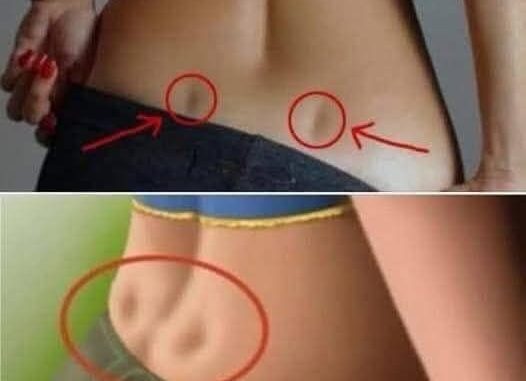
Those small, mirror-image indentations just above the buttocks—commonly called “back dimples” or “Venus dimples”—are a fascinating anatomical feature rooted in your skeletal structure. Medically known as “dimples of Venus,” they mark the points where the skin is tethered directly to the posterior superior iliac spine of the pelvis. These dimples appear when the overlying soft tissue does not cover the bone evenly, creating the characteristic concave shape.
Because back dimples are determined by the length and angle of the pelvic bones, they have nothing to do with body fat percentage, muscle tone, or fitness level. You won’t create them in the gym, nor will a high-fat diet erase them—they’re entirely dictated by genetics. Some people are simply born with iliac spines that sit closer to the skin’s surface, while others never develop the indentation, regardless of how lean or athletic they become.
Over time, several myths have arisen around back dimples. You may have heard that they indicate excellent circulation or a rock-solid lower back, or that they grant superior flexibility. In reality, although some individuals with these dimples report feeling stronger or more agile, no scientific study confirms any direct link to vascular health or muscular performance. Likewise, claims that back dimples ward off back pain or spinal issues remain unsubstantiated. If you experience discomfort in your lower back, it’s important to seek a professional evaluation rather than assuming—or dismissing—anything based on the presence or absence of dimples.
Culturally, Venus dimples have been celebrated for centuries as symbols of beauty and symmetry. In Renaissance art, the goddess Venus was often depicted with these markings to emphasize her divine proportions. Today they still captivate many, appearing frequently in fashion photography and body-positive social media, where they’re praised as a unique physical trait rather than a fitness indicator.
If you’re curious about your own anatomy, you can gently press around the top of your hip bones to feel where the skin attaches more tightly. And whether or not you have these dimples, remember that they’re simply a genetic footnote in your body’s blueprint—one small reminder that human beings come in wonderfully varied forms. For questions about back health, alignment, or circulation, always turn to a qualified healthcare professional who can offer personalized guidance. After all, true well-being depends on much more than skin-deep features.
Leave a Reply